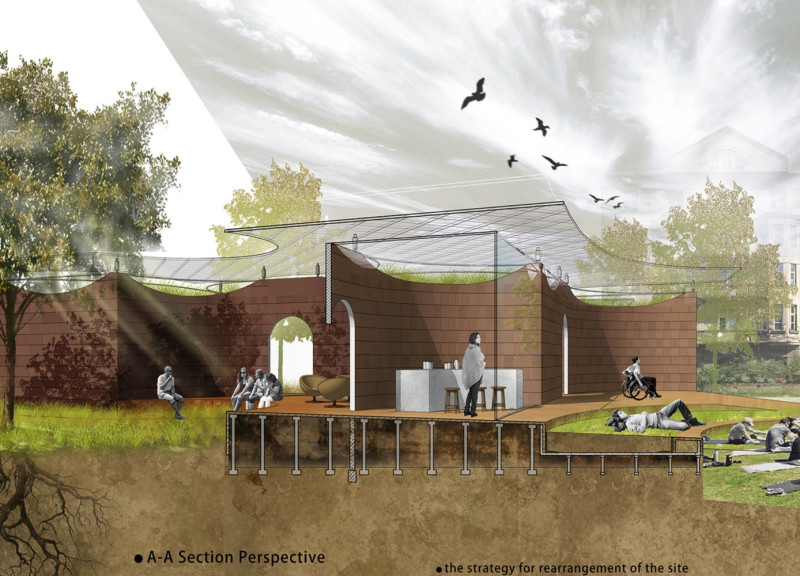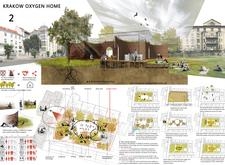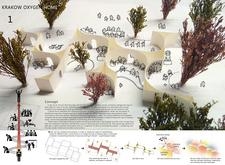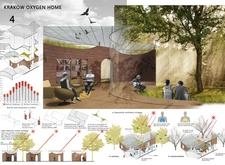5 key facts about this project
The function of the Krakow Oxygen Home extends beyond traditional healthcare facilities. It serves as a community hub, where both patients and their families can interact, find solace, and participate in shared experiences. The design resonates with the needs of its users, carefully configuring spaces that encourage social activities while also offering areas for reflection and personal time. This dual focus on community interaction and personal comfort reflects contemporary understanding of how environments influence human behavior and health.
The architectural design of the Krakow Oxygen Home is characterized by a thoughtful layout that includes various distinct areas such as reception, lounges, consulting rooms, and play zones, each tailored to meet specific needs. The entrance and reception areas are designed to be welcoming, setting a tone of warmth and openness. Adjacent lounges and libraries provide quiet spaces conducive to reading and relaxation, while play zones cater to families, particularly children, promoting a sense of joy and creativity within the healthcare environment. Consulting rooms are strategically placed to ensure privacy, allowing for meaningful interactions between healthcare providers and patients. Such spatial organization reinforces the project’s aim of creating a cohesive community experience.
Materials play a critical role in the architectural design of the Krakow Oxygen Home. A blend of clay bricks, glass, and wood is used throughout the structure, providing both aesthetic warmth and functional benefits. The choice of clay bricks brings a natural texture and connection to the earth, establishing a grounding effect. Large glass panels ensure ample daylight and seamless visual connections to the landscape, encouraging a sense of openness while also aiding in transitioning between indoor and outdoor spaces. Wood is incorporated thoughtfully to enhance the interior atmosphere, contributing to a tranquil and inviting ambiance. Additionally, the integration of greenery within both interior and exterior areas serves to improve air quality and foster a sense of well-being, linking patients more closely to nature.
Unique design approaches in the Krakow Oxygen Home include the strategic use of natural light and ventilation, which are critical for creating a soothing environment. Roof designs that provide effective management of seasonal temperature extremes exemplify the project’s attentiveness to local climatic conditions. Flexible spaces that can easily adapt to varied uses allow the facility to evolve based on changing patient needs and community dynamics, emphasizing an adaptable and resilient architectural approach.
The healing garden is a standout feature of the project. This space is not merely aesthetic; it addresses the therapeutic benefits of nature in the healing process, providing patients and their families with a peaceful retreat within the healthcare complex. The design encourages spontaneous social interactions and promotes well-being, fostering a sense of belonging and community amongst users.
Overall, the Krakow Oxygen Home exemplifies the contemporary intersection of architecture and healthcare, showcasing how thoughtful design can enhance the human experience. By considering elements that influence both physical comfort and psychological health, the project serves as a valuable model for future healthcare environments. Its architecture allows for a fluid experience that nurtures social connections while acknowledging the importance of personal space for reflection and healing. For further insights into this project, including architectural plans, architectural sections, and comprehensive architectural designs, readers are encouraged to explore the project presentation in detail.


























